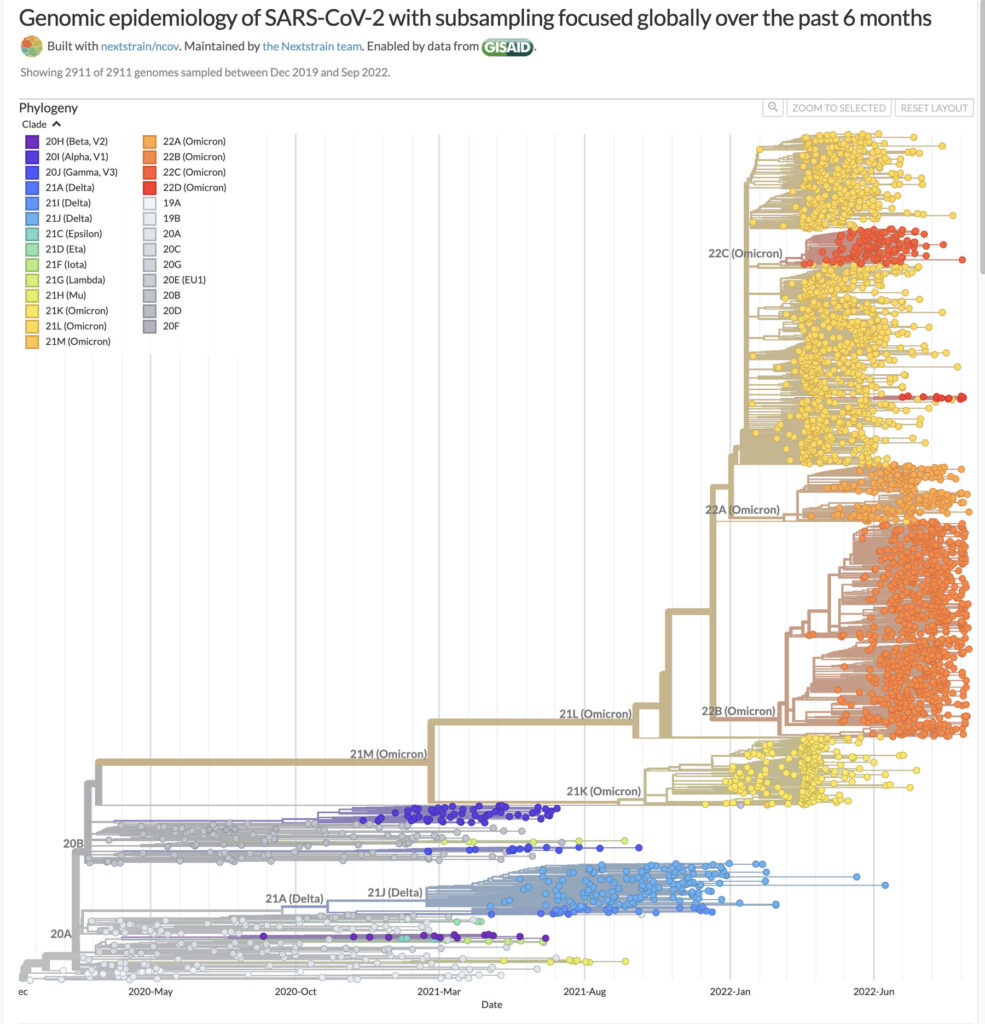We’ve learned a few important lessons from the COVID-19 pandemic.
Perhaps the most significant one is the importance of an early and rapid global response to the initial outbreak. A coordinated response—including widespread use of masks and other personal protective equipment (PPE), travel restrictions, lockdowns and social distancing—could save lives and reduce long-term health effects (1). Widespread availability of effective vaccines goes hand in hand with these measures.
New Boosters to Fight Omicron
Last month, Pfizer/BioNTech announced the US Food and Drug Administration (FDA) had granted emergency use authorization (EUA) for a new adapted-bivalent COVID-19 booster vaccine for individuals 12 years and older. This vaccine combines mRNA encoding the wild-type Spike protein from the original vaccine with another mRNA encoding the Spike protein of the Omicron BA.4/BA.5 subvariants. Moderna also announced FDA EUA for its new Omicron-targeting COVID-19 booster vaccine. The Omicron variant of SARS-CoV-2 shows multiple mutations across its subvariants, and it is currently the dominant SARS-CoV-2 variant of concern across the world.

Booster doses of vaccines have become a way of life, both due to declining effectiveness of the original vaccines especially in older adults (2), and the rapid mutation rate of SARS-CoV-2 (3). Clinical data for the new Pfizer/BioNTech booster vaccine showed superior effectiveness in eliciting an immune response against Omicron BA.1 compared to the original vaccine. Previously, Moderna published interim results from an ongoing phase 2-3 clinical trial, showing that the new bivalent booster vaccine elicited a superior neutralizing antibody response against Omicron, compared to its original COVID-19 vaccine (4).
mRNA Vaccines Lead the Pack
COVID-19 vaccine development efforts have focused on several methods; however, the current vaccine landscape is dominated by mRNA vaccines and adenoviral vector vaccines. Of these technologies, mRNA vaccines possess several advantages, one of which is critical in a pandemic response: they can be designed, developed and scaled up rapidly. In the case of COVID-19, the SARS-CoV-2 genomic sequence was published on January 12, 2020, and the first dose of the Moderna mRNA vaccine was administered in a phase 1 clinical trial on March 16, 2020 (5). The first dose of the Pfizer/BioNTech vaccine followed shortly thereafter on April 23 in a phase 1–2 clinical trial.
The remarkable success of mRNA vaccines in the fight against COVID-19 has spilled over into other areas of research, such as personalized therapy for colorectal cancer and potential treatment of cardiac fibrosis. Initial challenges in mRNA vaccine delivery have been largely overcome with the advancement of lipid nanoparticle technology, currently used in both Pfizer/BioNTech and Moderna COVID-19 vaccines. Other related delivery systems, such as polymeric nanoparticles, cell-penetrating peptides and cationic emulsions are being investigated (6).
mRNA: Rapid Design, Development and Scale-up
A key requirement for mRNA vaccine development in a rapid-response situation is the need for a manufacturing process that is compatible with clinical requirements and easily scalable. The method of choice for mRNA manufacturing is in vitro transcription (IVT), and the process may involve several modifications to a standard transcription reaction:
- Incorporation of modified nucleotides, such as N1-methylpseudouridine used in both the Pfizer/BioNTech and Moderna vaccines, reduces the innate inflammatory response to foreign mRNA and results in increased expression of the mRNA within the cell (7).
- Optimization of 5’ and 3’ untranslated regions (UTRs), addition of a poly(A) tail, and addition of a 5’ cap structure all help to increase mRNA stability and translation efficiency (8).
Whitley et al. developed a scalable process for IVT of mRNA and subsequent purification that is readily adaptable to a clinical-grade manufacturing workflow (9). In addition, they described methods for characterization, quality control and stability testing. The IVT reaction used custom formulations of Promega T7 RiboMAX™-related products. The modified reaction included the incorporation of N1-methylpseudouridine and a cap analog. The optimized IVT reaction produced reproducible and consistent mRNA yields, while downstream chromatographic purification steps removed residual reagents and reaction byproducts. The researchers noted that mRNA produced by their process is suitable for lipid nanoparticle encapsulation, and the resulting complexes demonstrated effective immune responses in various preclinical studies.
Reliable, high-yield and high-purity mRNA manufacturing processes will help in the ongoing battle against COVID-19 by enabling rapid production of vaccines against emerging SARS-CoV-2 variants and subvariants. In addition, they could ensure that the lessons learned from this pandemic will help us develop a better response to the next one.
Discover how our custom manufacturing team can tailor product formats to meet specific needs.
References
- Sachs, J.D. et al. (2022) The Lancet Commission on lessons for the future from the COVID-19 pandemic. Lancet, DOI: 10.1016/S0140-6736(22)01585-9
- Nanishi, E. et al. (2022) Waning effectiveness of SARS-CoV-2 mRNA vaccines in older adults: a rapid review. Hum. Vaccin. Immunother. 18(5), 2045857.
- Malik, J.A. et al. (2022) The SARS-CoV-2 mutations versus vaccine effectiveness: New opportunities to new challenges. J. Infect. Public Health 15, 228–240.
- Chalkias, S. et al. (2022) A bivalent omicron-containing booster vaccine against Covid-19. N. Engl. J. Med. DOI: 10.1056/NEJMoa2208343
- Barbier, A.J. et al. (2022) The clinical progress of mRNA vaccines and immunotherapies. Nat. Biotechnol. 40, 840–854.
- Chaudhary, N. et al. (2021) mRNA vaccines for infectious diseases: principles, delivery and clinical translation. Nat. Rev. Drug Discov. 20, 817–838.
- Hogan, M.J. and Pardi, N. (2022) mRNA vaccines in the COVID-19 pandemic and beyond. Annu. Rev. Med. 73, 17–39.
- Pardi, N. et al. (2018) mRNA vaccines—a new era in vaccinology. Nat. Rev. Drug Discov. 17, 261–279.
- Whitley, J. et al. (2021) Development of mRNA manufacturing for vaccines and therapeutics: mRNA platform requirements and development of a scalable production process to support early phase clinical trials. Transl. Res. 242, 38–55.
Latest posts by Ken Doyle (see all)
- Will Artificial Intelligence (AI) Transform the Future of Life Science Research? - February 1, 2024
- RAF Inhibitors: Quantifying Drug-Target Occupancy at Active RAS-RAF Complexes in Live Cells - September 5, 2023
- Synthetic Biology: Minimal Cell, Maximal Opportunity - July 25, 2023
